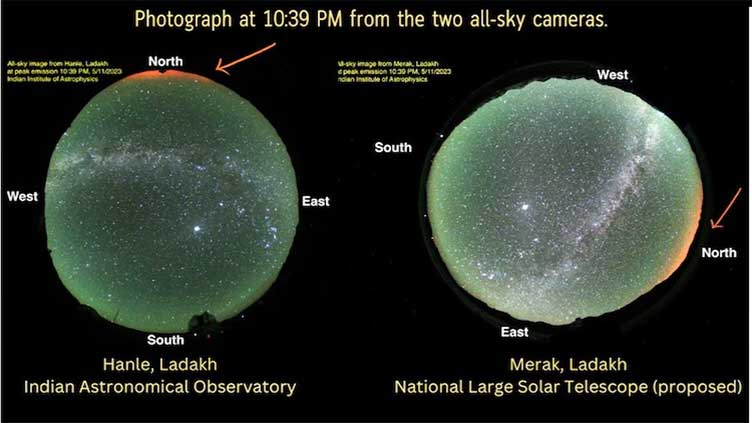Mysterious redness seen in skies of Ladakh

Technology
Indian telescopes capture rare event
(Web Desk) - The IAO, operated by the Indian Institute of Astrophysics (IIA), Bengaluru, used an All-sky Camera to capture this extraordinary event.
In an unexpected yet stunning celestial event, the Indian Astronomical Observatory (IAO) in Ladakh's Hanle and Merak captured images of a rare redness in the skies.
The red-coloured auroral activity sparked on the night of November 5 and the unusual spectacle was attributed to a Stable Auroral Red (SAR) event, a rare atmospheric phenomenon that paints the sky in vivid shades of red, contrasting the more common green and blue curtains of light typically associated with auroras at higher latitudes.
The red aurora phenomenon was visible towards the northern horizon from 10 pm until midnight, with its intensity peaking around 10:40 pm.
The IAO, operated by the Indian Institute of Astrophysics (IIA), Bengaluru, used an All-sky Camera to capture this extraordinary event.
The camera continually monitors the entire celestial sphere, allowing for such rare occurrences to be documented.
Merak, another location in Ladakh situated on the banks of Pangong Tso, also managed to capture this incredible celestial display.
Known as the proposed site for the National Large Solar Telescope, Merak's view was partially obscured by the presence of higher mountains in the region.
This SAR event was not exclusive to Hanle and Merak.
Multiple locations around the world also witnessed this rare spectacle, making it a global astronomical event.
The occurrence of such an auroral emission at lower latitudes like Ladakh, situated at 33° North, is a rare and exciting occurrence, adding to the allure of Hanle as a hub for astro-tourism and scientific research.
The IIA expressed excitement about studying more such auroral activities from Hanle, particularly during the Sun’s active periods.
These rare celestial events continue to enhance the appeal of Hanle as a destination for astronomy enthusiasts and researchers alike.


